Tackling Wasted Time in Queues
OVERVIEW
JumpTheLine is a SaaS platform that addresses the pervasive issue of extensive waiting times, which consume a significant portion of an adult’s lifetime. With an average of 273 days or 6,554 hours spent queuing over a lifespan, JumpTheLine has developed a mobile app solution that incorporates ticketing for event organizers, the innovative Invite feature, and the game-changing Jump feature.
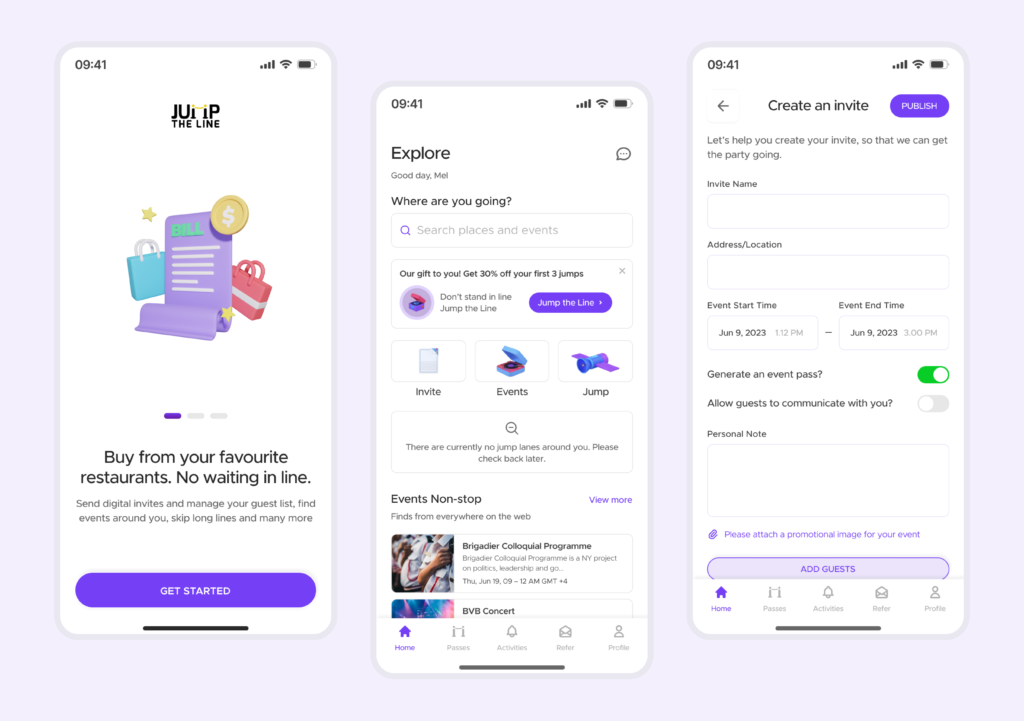
By implementing JumpTheLine in the USA and its surrounding areas, users are liberated from prolonged waiting periods, resulting in heightened satisfaction, increased productivity, and a complete transformation of social experiences.
MY ROLE
As a product designer, my role was to understand user needs, conduct research, and design a user-friendly interface for the JumpTheLine app. I created intuitive user flows, visually appealing designs, and collaborated with cross-functional teams to ensure a seamless and engaging user experience.
TIMELINE
September 2020 – November 2020: B2C product, mobile application, and UX design.
Background
In today’s fast-paced world, time is a precious commodity, yet people still find themselves spending a significant portion of their lives waiting in lines. Recent studies reveal that individuals dedicate around 5 years to standing in queues, with 4 years and 6 months lost to this waiting time. This extensive period not only reduces productivity but also breeds frustration and dissatisfaction.
PROBLEM STATEMENT
The prevalent issue of excessive waiting time in lines or queues not only leads to a significant waste of time but also contributes to emotional imbalances and customer dissatisfaction, ultimately affecting businesses. Furthermore, the absence of a streamlined event management system prevents users from efficiently creating and receiving event invites.
TARGET AUDIENCE
JumpTheLine is primarily designed for individuals who highly value their time and seek efficient ways to save time in their daily lives. The target audience includes:
- Busy Professionals: Professionals with demanding schedules, such as executives, entrepreneurs, and freelancers.
- Tech-Savvy Millennials: The younger generation, known for their familiarity with technology and mobile apps, who appreciate streamlined experiences.
- Event Organizers: Professionals who need a “fast pass” access for their attendees.
- Travelers and Commuters: Jet-setters, frequent travelers, and daily commuters who often encounter long lines at airports, train stations…
- Social Enthusiasts: People who enjoy visiting popular social places, entertainment venues, restaurants, and events.

Research & Discovery
The development of the JumpTheLine app involved thorough research and discovery processes to identify the key pain points associated with waiting in queues and design an effective solution.
USER SURVEY
The user survey conducted for the JumpTheLine app involved collecting data from a diverse sample of individuals to gain insights into their experiences and frustrations related to waiting in queues.
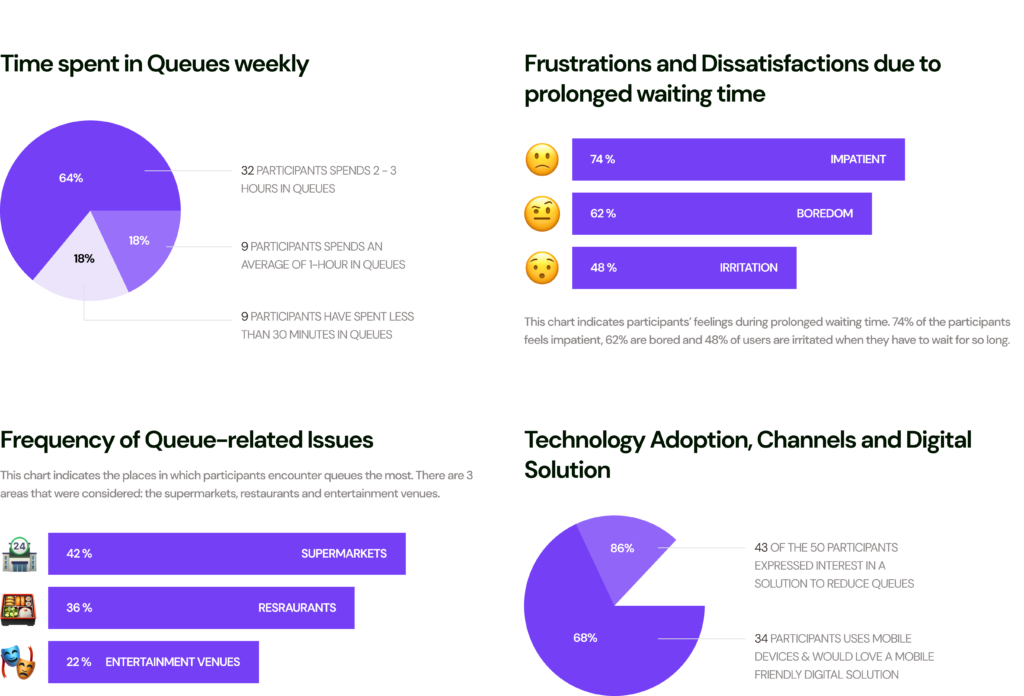
A total of 50 participants across different age groups and demographics were surveyed, and the following are the results:
- Time Spent in Queues: The survey revealed that 64% estimated they spend an average of 2-3 hours per week waiting in various lines.
- Frustrations and Dissatisfaction: The survey findings indicated that 89% of participants expressed frustration and dissatisfaction with waiting in queues. Of those respondents, 74% felt impatient, 62% experienced boredom, and 48% expressed irritation towards businesses due to prolonged waiting times.
- Frequency of Queue-related Issues: When asked about specific queue-related issues, 42% of respondents reported encountering long queues at supermarkets, 36% mentioned queues at popular restaurants, and 22% highlighted queues at entertainment venues as major concerns.
- Technology Adoption: The survey revealed that 68% of respondents owned smartphones and were open to using mobile apps to optimize their queue experiences. Among this group, 86% expressed interest in a solution that would allow them to pre-order or reserve their spot in the queue remotely.
COMPETITIVE STUDY
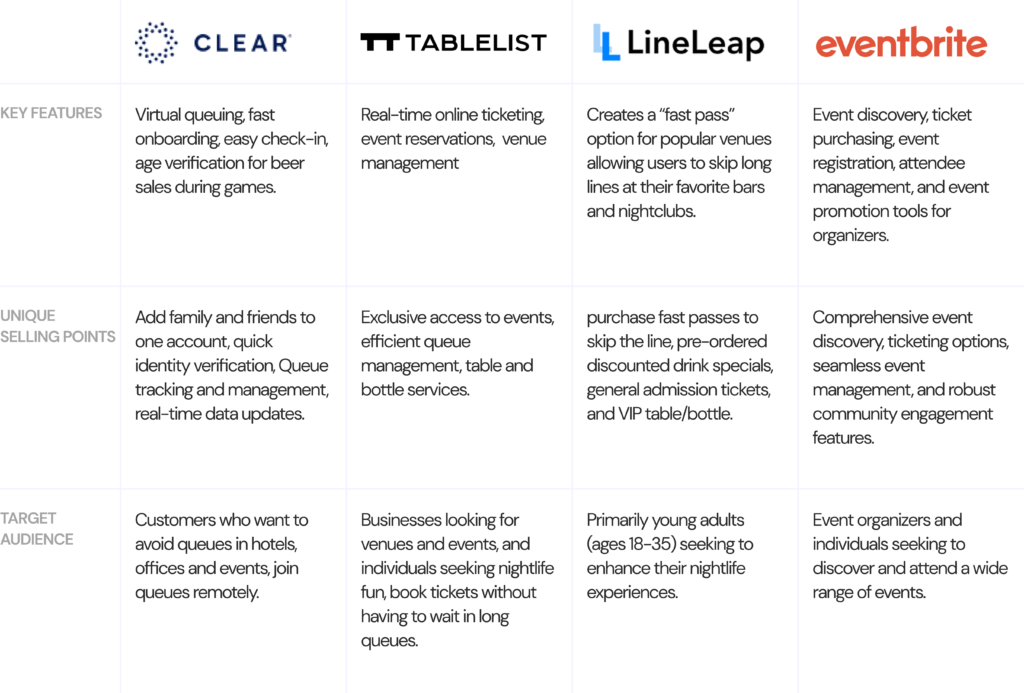
JumpTheLine aims to stand out with unique features like clear onboarding, comprehensive venue database, and events and invitation setup. It offers a holistic approach with advanced reservations, seamless user experience, and comprehensive venue coverage, optimizing social experiences by minimizing waiting times effectively.
USER PERSONA
Alex is a busy professional working for a digital marketing agency. He has a demanding schedule, juggling multiple client projects and deadlines. Alex values their time and seeks ways to optimize productivity in both personal and professional aspects of life. They are tech-savvy and rely heavily on mobile apps to streamline daily activities.
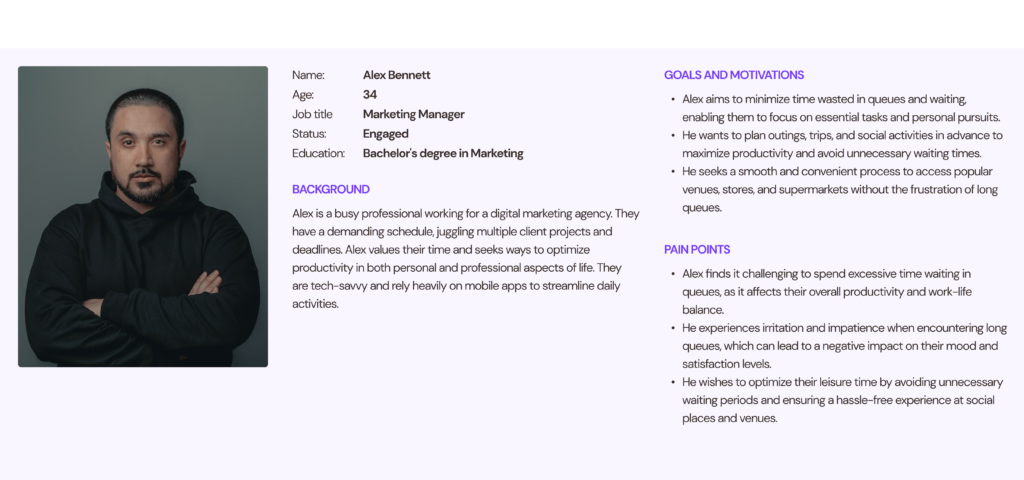
UX JOURNEY MAP
The UX map provides a visual representation of the seamless and efficient journey users can experience when utilizing the JumpTheLine app. This chart outlines the process for the key phases of the app: the entry point (log in and sign up), searching for places and events, Creating invites, viewing events, and referring a contact.
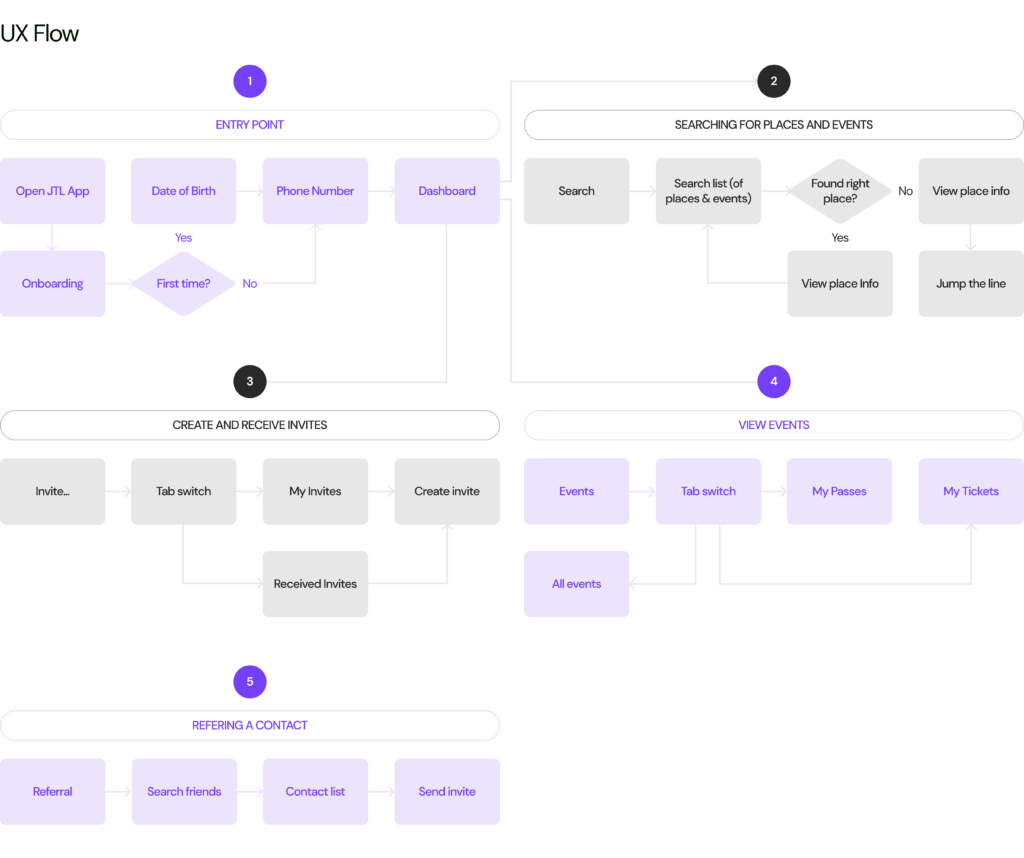
STYLE GUIDE
The style guide consists of a few elements and scales needed for the app design such as, typescale, colors, icons, input fields, illustrations, and other components.
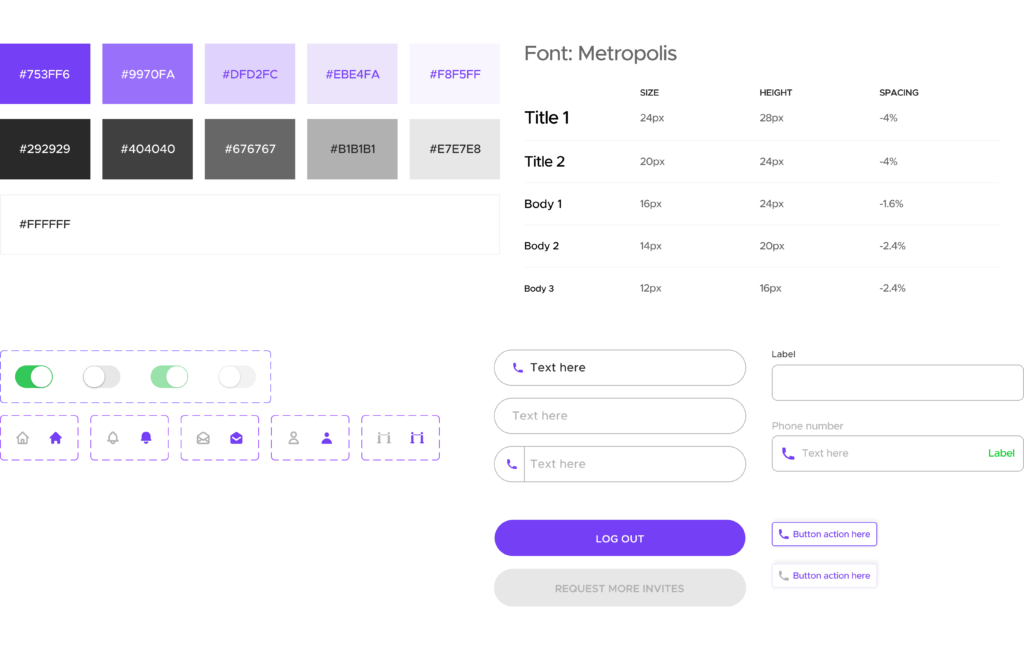
High-fidelity Design
SPLASH SCREEN AND ONBOARDING
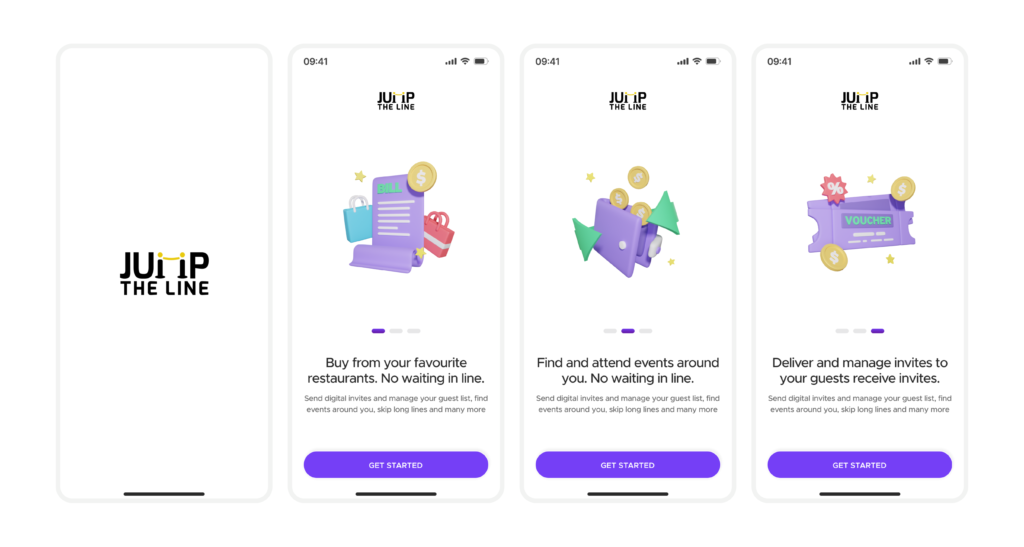
CREATING AN ACCOUNT
In order to simplify the process of creating an account, a user is only required to enter his or her phone number and date of birth (in order to ensure users are adults and/or above 13 years of age). A confirmation code is then sent to the phone number in order to complete sign up.
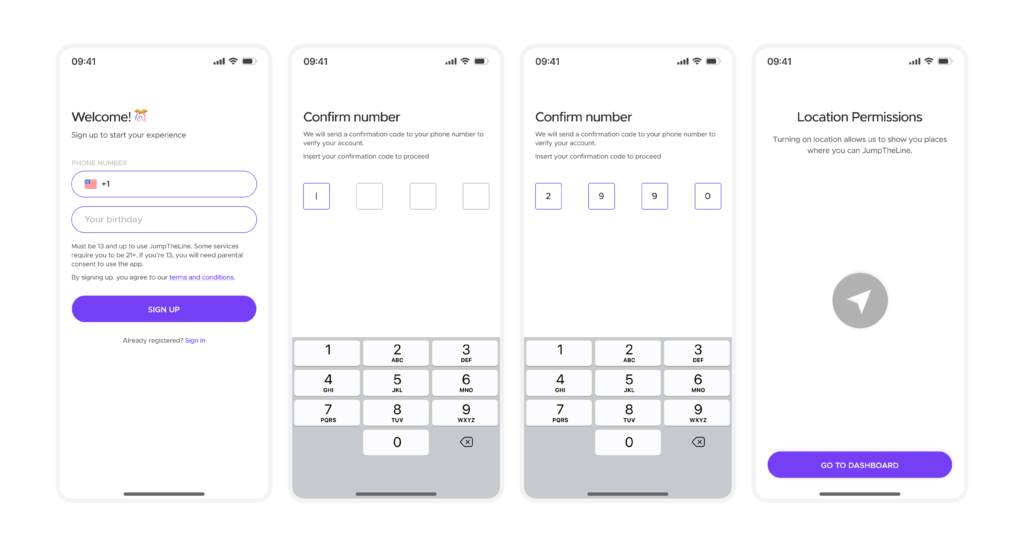
SIGNING IN
Returning users, on the other hand, are able to sign into the app using their registered phone number that is verified through a confirmation code sent to the phone number.
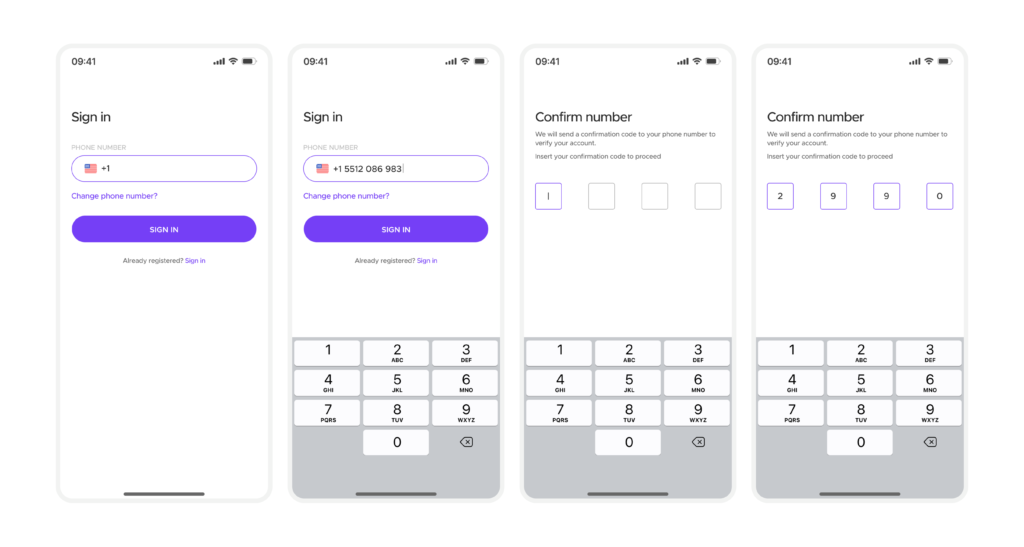
DASHBOARD, PASSED, ACTIVITIES AND REFERRALS
The Dashboard provides quick access to perform all major tasks within the app, such as searching for places, creating invites, viewing events, passes and tickets, referral page and profile information.
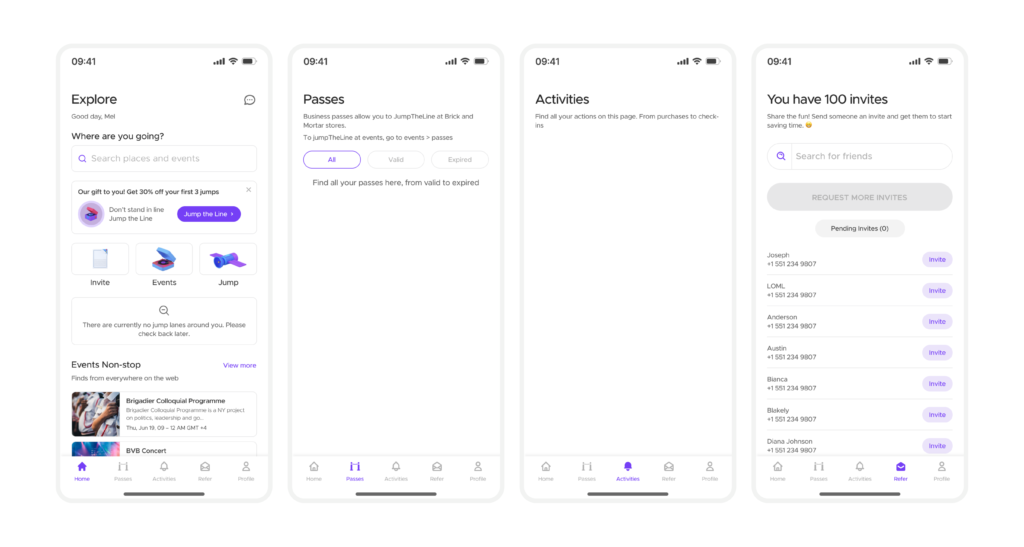
SEARCHING FOR EVENTS
The search feature allows users to input their location and find venues for queue jumping. It includes a user-friendly interface for location input and displays a visually organized list of relevant venues, including information like name, address, and estimated wait times. This empowers users to optimize their social experiences.
The event information screen displays key details, including event name, date, venue, and description. It also provides event location on a map, schedule, ticketing information, and a primary button to “take me there”.
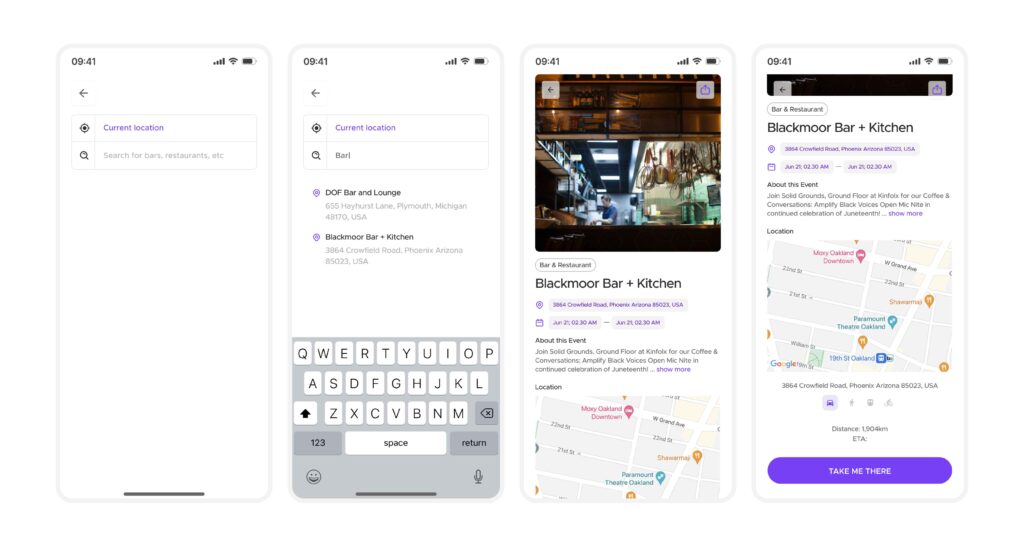
CREATING AND RECEIVING INVITES & EVENTS
The Invite section within the app allows users to seamlessly switch between two sections: “My Invites” and “Received Invites.” Users have the capability to create their own event invites, where they can input essential details such as name, location, and additional information as presented on the screen. By clicking the “Events” icon on the dashboard, users can access the Events page, which enables them to discover events in proximity to their location, along with options for Passes and Tickets.
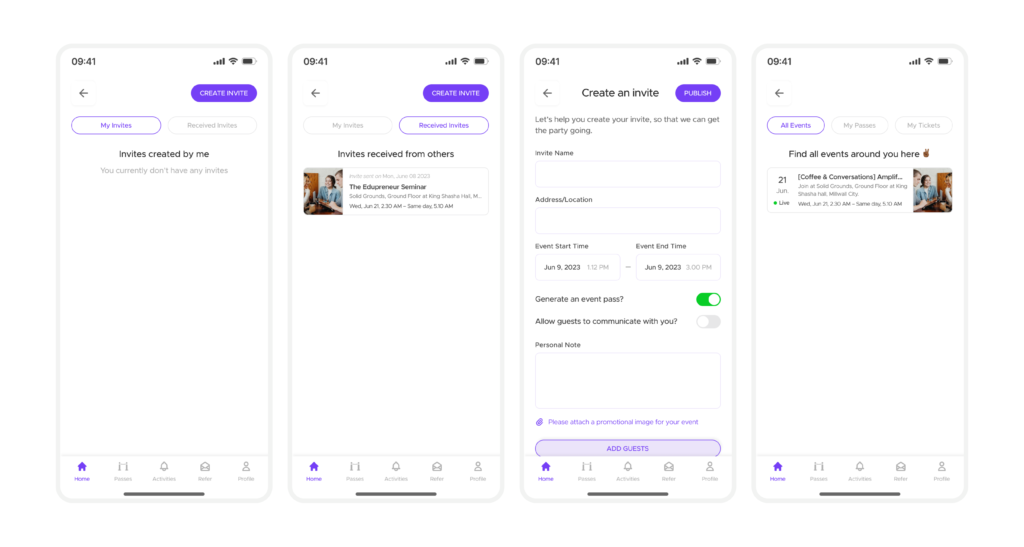
PROFILE AND SETTINGS
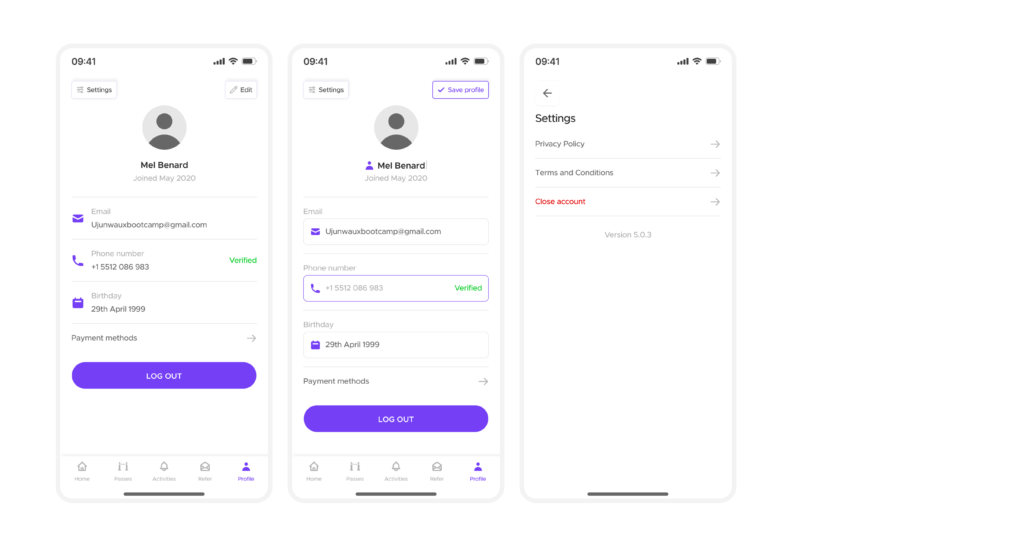
Impacts
After the launch of these design solutions and features, users experienced significant positive impacts. Wait times decreased by up to 70%, allowing users to save valuable time. Customer satisfaction reached 85% due to the streamlined event invites and management feature. Event discovery increased by 60%, leading to improved participation and engagement. Obtaining event access became simpler, with a success rate of 90% in securing passes and tickets. User adoption surged with a growth rate of 150% within the first six months, highlighting the value users found in the design solutions and features.
Key Learnings
User-Centric Approach
The importance of taking a user-centric approach became evident throughout the design process. Conducting thorough user research, gathering feedback, and incorporating user needs and preferences were crucial in creating a solution that truly addressed their pain points. This learning highlighted the significance of empathizing with users and continuously iterating based on their feedback to deliver a valuable and user-friendly product.
Data-Driven Decision Making
Leveraging data for decision making proved to be vital in designing effective features. Analyzing user behavior, engagement patterns, and feedback data allowed for informed design choices and optimizations. It helped identify areas for improvement, prioritize features, and validate design decisions. This learning highlighted the importance of collecting and analyzing relevant data throughout the design process to drive evidence-based decisions.
